Semalt: Ways to Analyze Your SEO Performance

TABLE OF CONTENTS
1. Introduction
2. Why analyze your SEO performance in the first place?
3. Analyzing your SEO performance
4. SERP
5. Content
6. Google Webmasters
7. Page Speed
8. Conclusion
Introduction
Want to rank higher on Google TOP? Want to drive more traffic to your website? Want to increase the overall success odds of your business? An SEO analysis might just be the thing you need. The information gathered can help in making strategic decisions to improve your website's ranking on search engines, drive more traffic to your site and much more.
Semalt has a powerful website analytics tool for effective market monitoring; position tracking of your website and that of your competitors; and they also deliver to you a comprehensive analytics business report.
Why analyze your SEO performance in the first place?
1. To monitor your website positions: With Semalt, you're allowed to create a full picture of how things stack up for your business in the online marketplace. With the information obtained, you will be able to highlight essential points in your future work.
2. To discover new markets: You will discover new opportunities for the distribution of your goods and services and your overall brand development in specific countries which will trigger region-related business strategies for your business.
3. To keep an eye on your competitors' positions: Semalt also discloses all information regarding your competitors' market situation. This knowledge will help you develop effective strategies to always stay ahead of the pack as you will discover the things they are doing right which you can inculcate into your array of effective strategies.
4. To make a presentation of your analysis: Semalt gives you the unique opportunity to make white-label reports of your analysis which you can easily download in PDF or EXCEL formats right from their site. This is highly essential when you need to make presentations for your clients or your team.
Analyzing your SEO performance
After logging in to your dashboard, you can click on the menu icon by the left where you will see a list of options for SEO analysis.
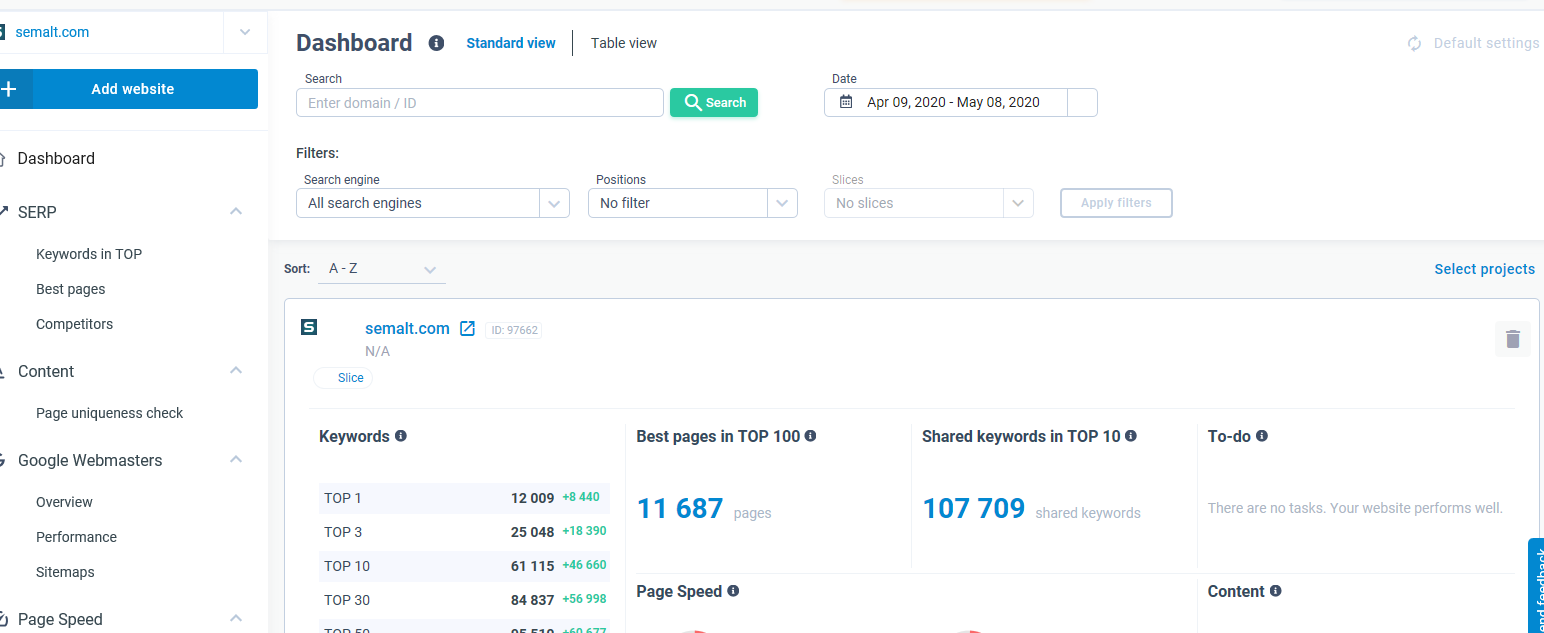
At the very top, you have the option to add the website you want to analyze. Below that, you have your dashboard button that you can always click on any time you feel like going to your dashboard.
Then right below the dashboard button, are the main Semalt analysis tools which are divided into 4 sections - SERP, Content, Google Webmasters and Page Speed.
Let's see how each of these tools work. It is important to note here that you can always download a report wherever you see a ‘Get Report” button.
SERP
The SERP has 3 subsections under it:
a. Keywords in TOP: The report gotten from here displays all the keywords that your site ranks for in Google organic search results, ranked pages, and their SERP positions for a specific keyword. When you click on 'Keywords in TOP', you will be taken to a page where you can see the number of keywords in TOP, keywords distribution by TOP and rankings by keywords.
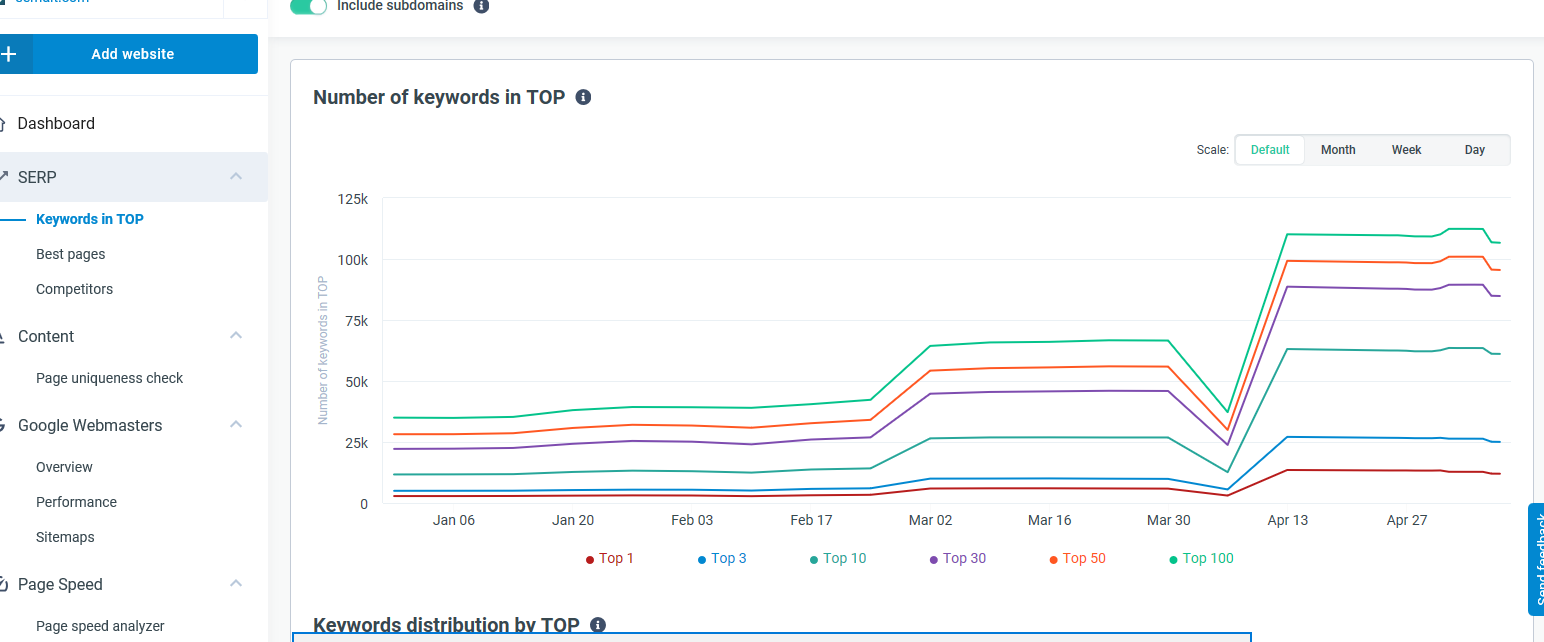
The ‘Number of Keywords’ is a chart that shows the number of keywords in Google TOP over time. This assists you in checking out the changes in the number of keywords your website ranks for in TOP 1-100 organic search results.
With ‘Keywords distribution by TOP’, you can find the exact number of keywords your website ranks for Google TOP 1-100 organic search results set against an earlier date.
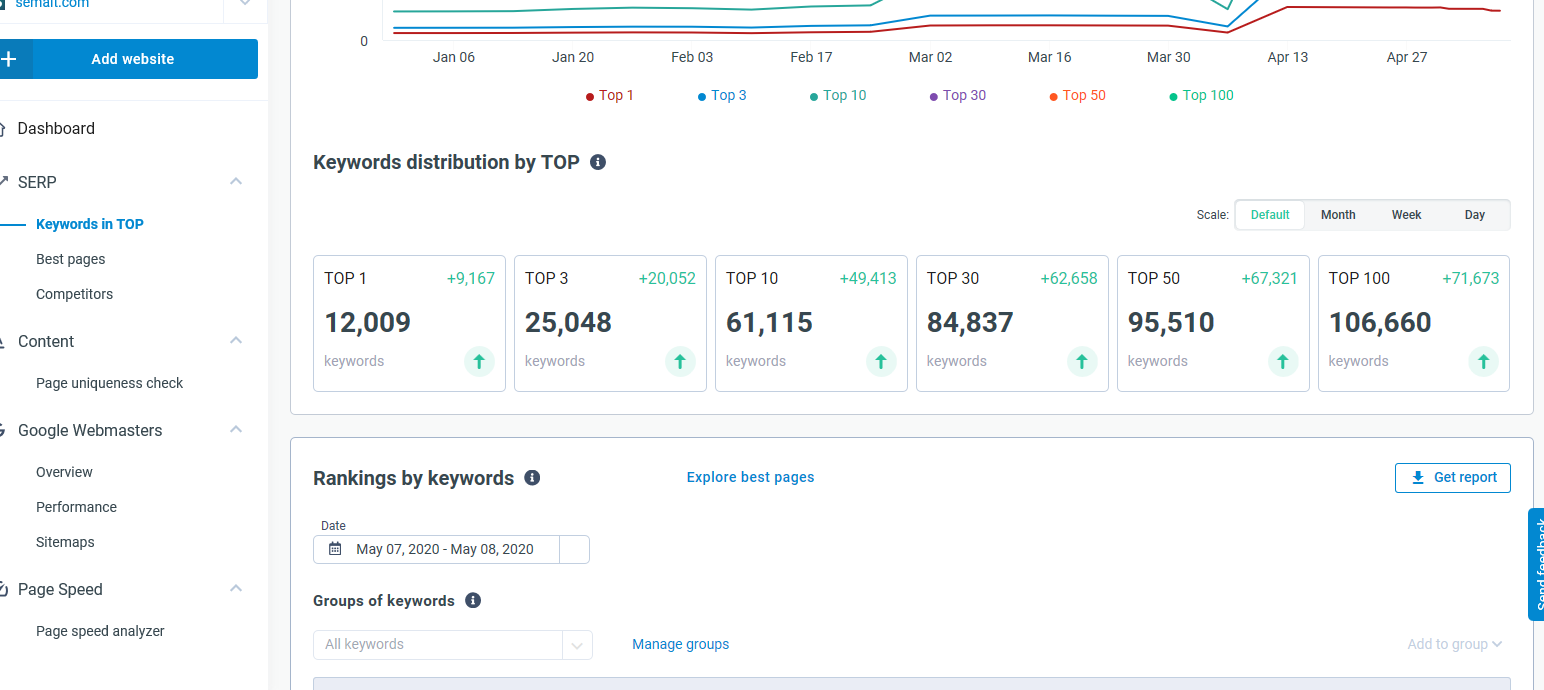
‘Rankings by keywords’ is a table that shows you the most popular keywords your website pages rank for in Google TOP organic search results. The table will also show you their SERP positions for the selected dates and the changes that have occurred set against a previous date. When you click on the 'manage groups' button, you can create a new group of keywords, manage existing ones or you can choose to select keywords from the 'Rankings by Keywords' table below and add them to your group of keywords. This is important in that you can use it to monitor your website's progress by subject, URL, etc.
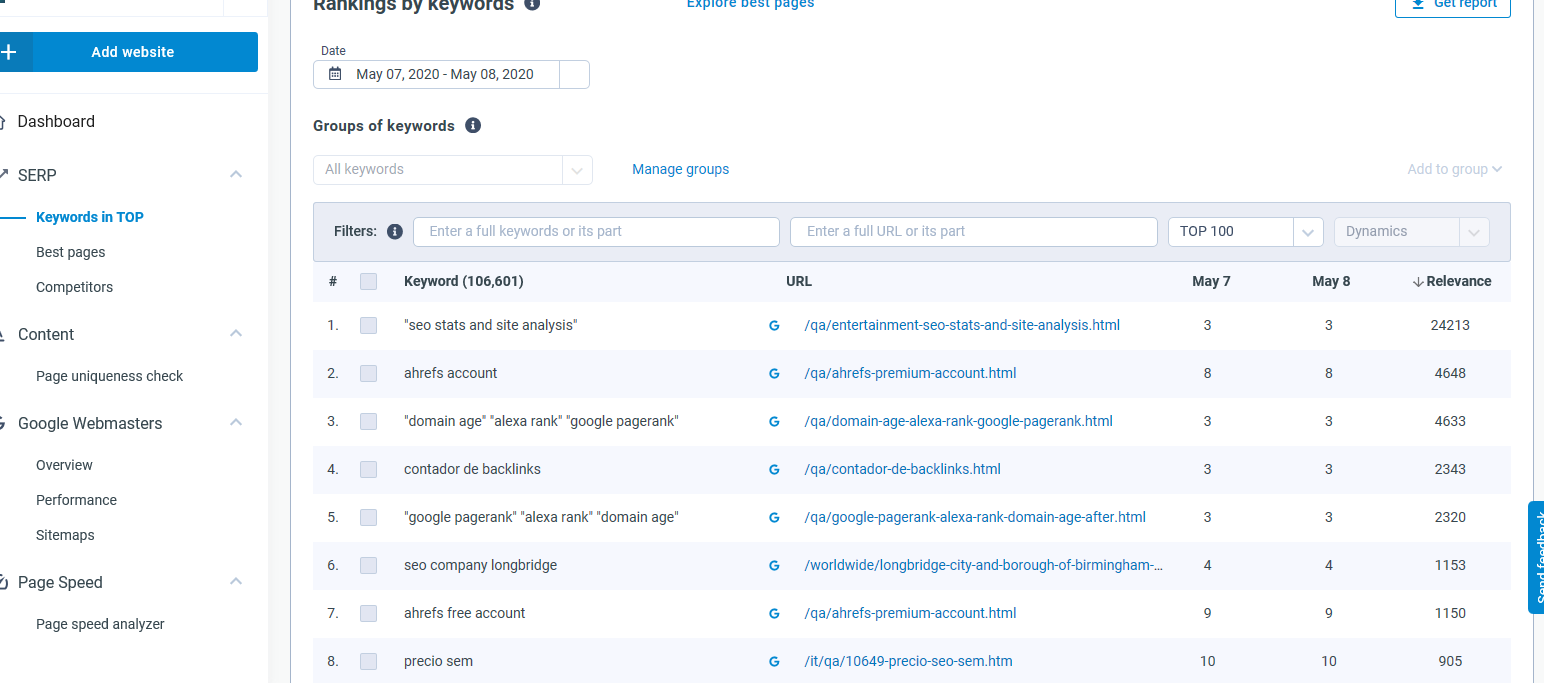
Semalt also gives you the opportunity to filter the data in the table by different parameters - a keyword or its part, an URL or its part, Google TOP 1-100 and position changes.
b. Best Pages: When you click on 'Best pages', you will be shown the pages on your site that bring in the highest number of organic traffic. You should study this carefully, looking for on-page SEO errors, fixing these errors, adding more unique content as well as promoting these pages for more traffic generation from Google.
‘Best pages over time’ is a chart that reveals the changes in the number of your website pages in TOP since the inception of your project. You can view the data per week or per month when you switch the scale.
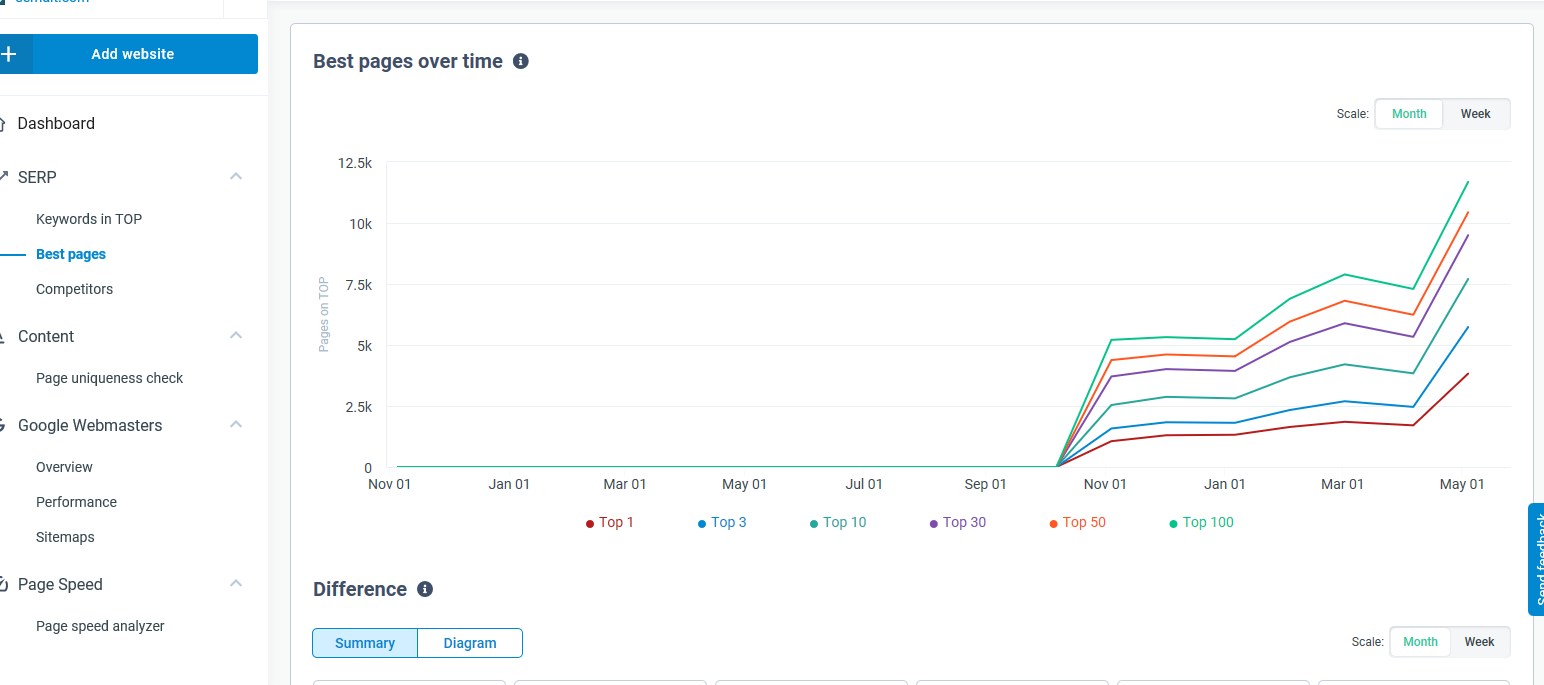
Below 'Best pages over time', you have the 'Difference' tool which helps you find the number of websites in Google TOP 1-100 organic search results set against an earlier date. You can switch the scale to check the difference per week or per month. You also have the option to view the difference numerically or in a diagram format.
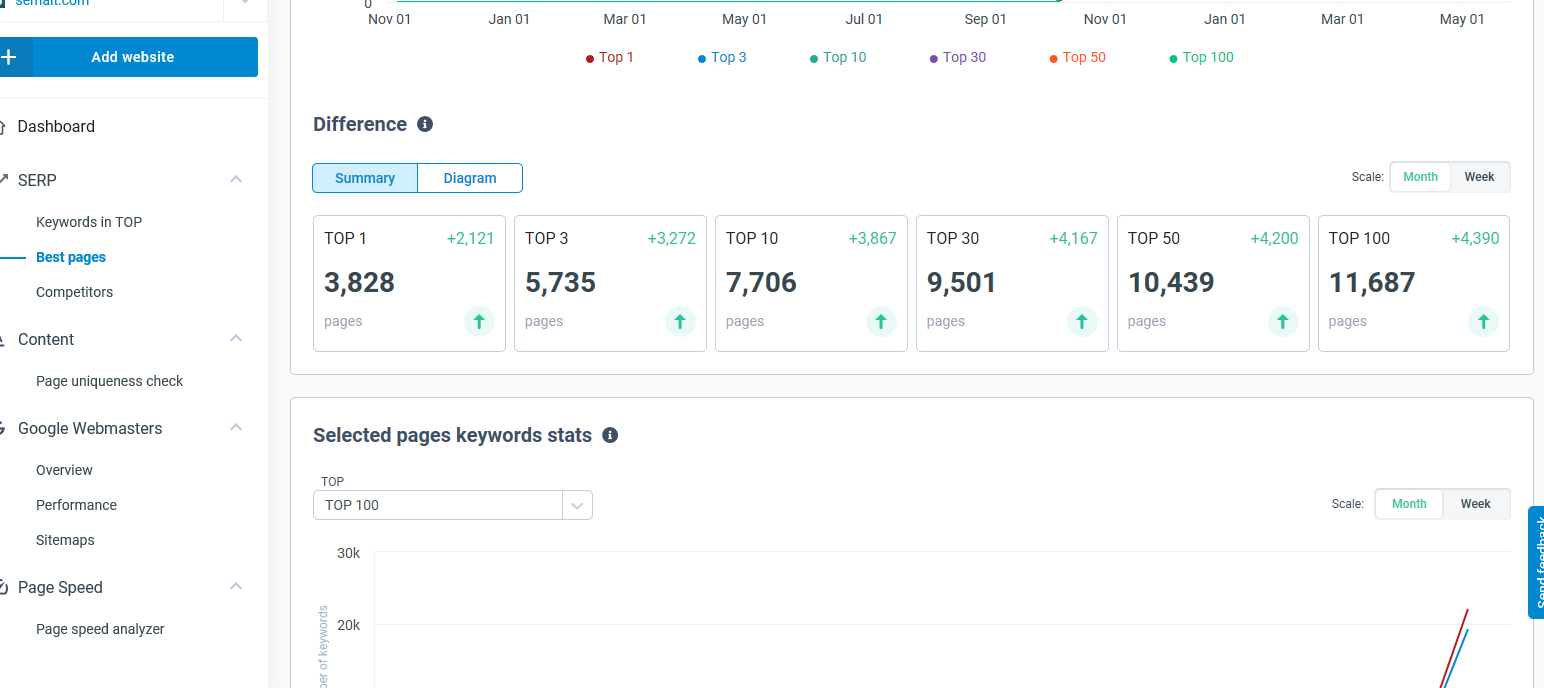
There is also a chart called 'Selected pages keywords stats' that displays the changes in the number of keywords the selected pages have been ranking for in Google TOP from the inception of the project.
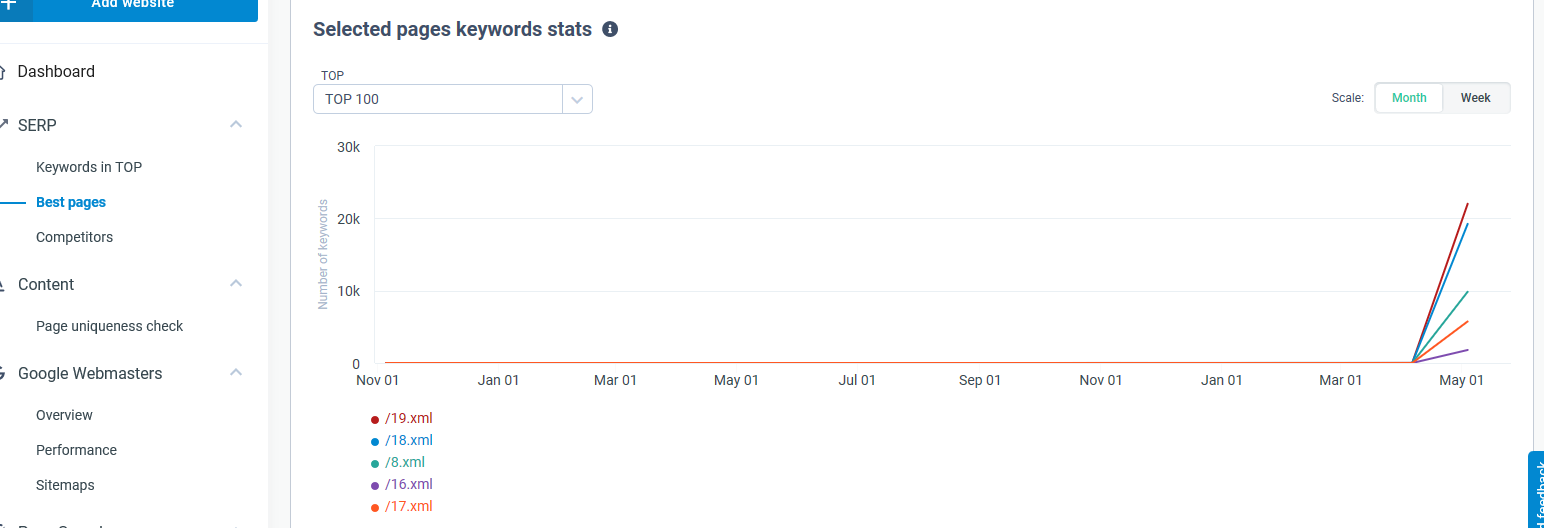
Last, we have 'Pages on TOP', which is a table showing the number of keywords a specific page has been ranked for in Google TOP for the dates selected. You can also filter the best pages list by a URL or its part and also choose to select the pages in your website that are in TOP 1-100 ranking.
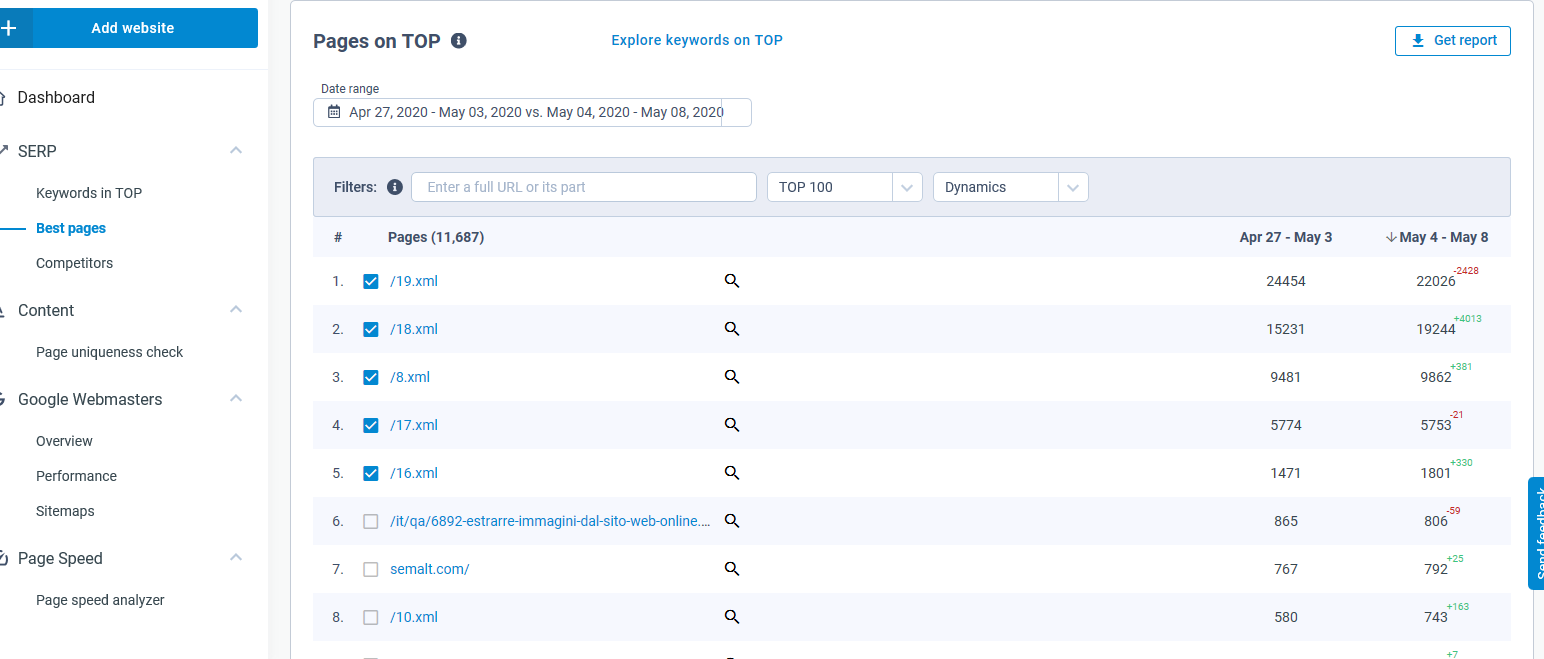
c. Competitors: This is where you will discover all the websites that rank in TOP 100 for similar keywords your website ranks for. You will also see where you stand among your rivals by the number of all keywords in TOP 1-100.
On this page, you will find a set of blocks called 'Shared Keywords' which display the number of shared keywords that your site and your TOP 500 rivals rank for in Google SERP.
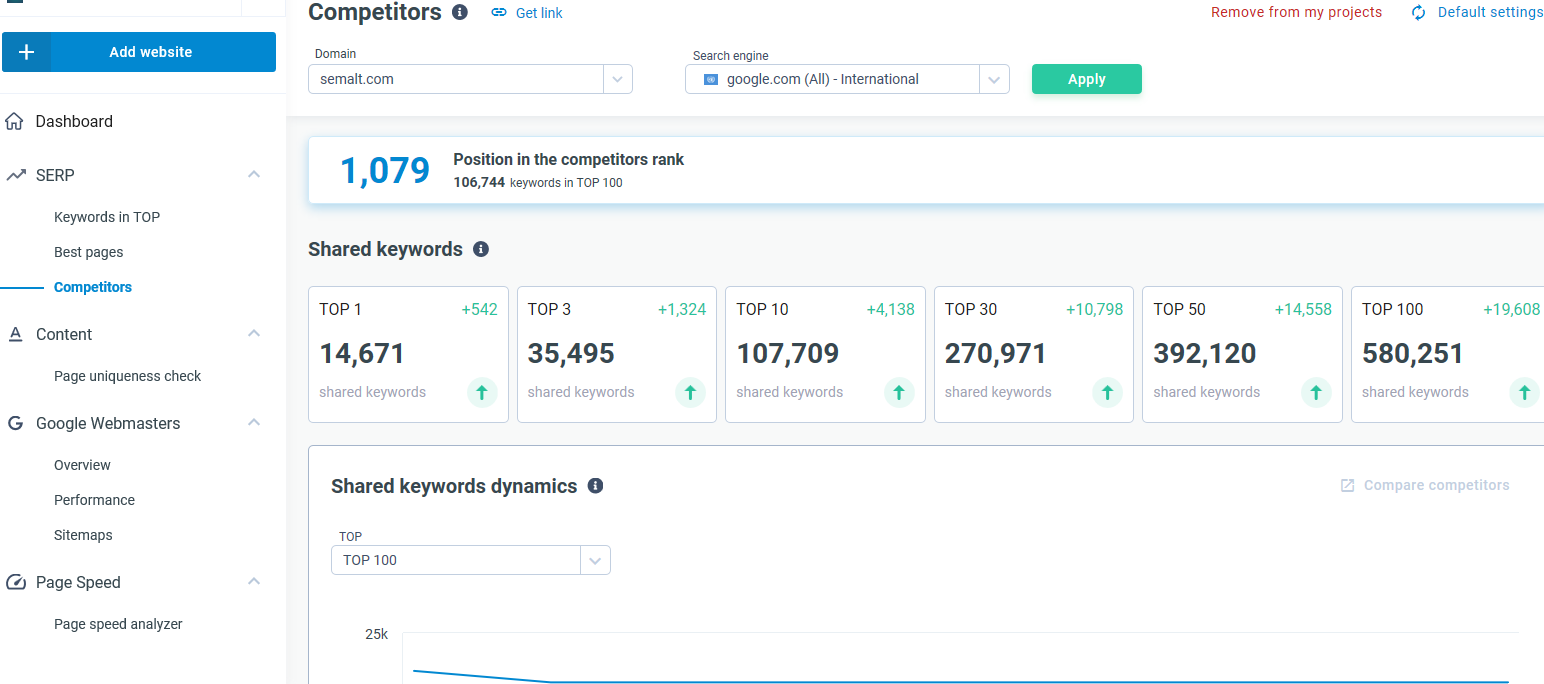
Next, you find 'Shared Keywords Dynamics' which is a chart that shows the changes in the number of shared keywords for which the specific competitors you have highlighted have ranked in TOP.
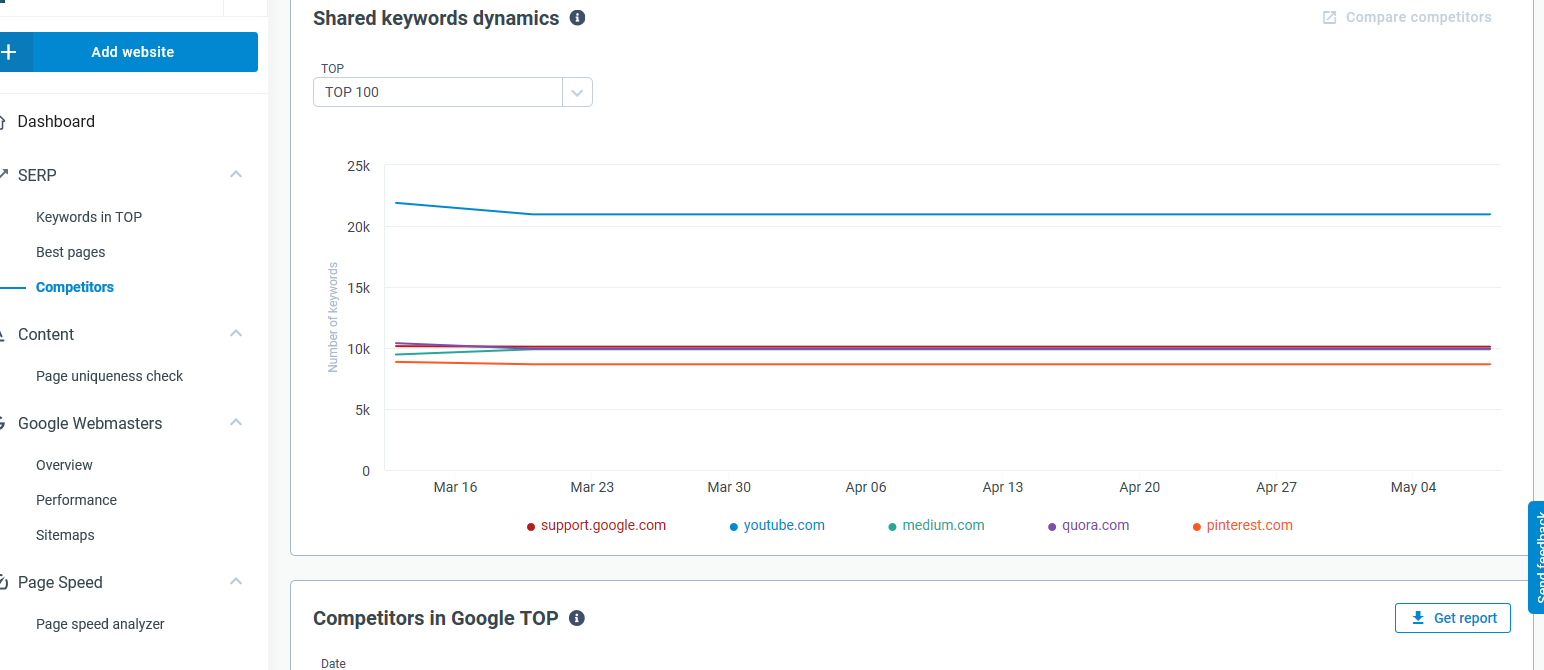
Below you will see 'Competition in Google TOP' which is a table that reveals the number of shared keywords that you and your competitors' website rank for in TOP. Semalt gives you the option to study the difference in the number of shared keywords set against an earlier date. You can also filter the list of your rival websites using the full domain or a part of it and you can streamline the list to only the websites that have entered TOP 1-100.
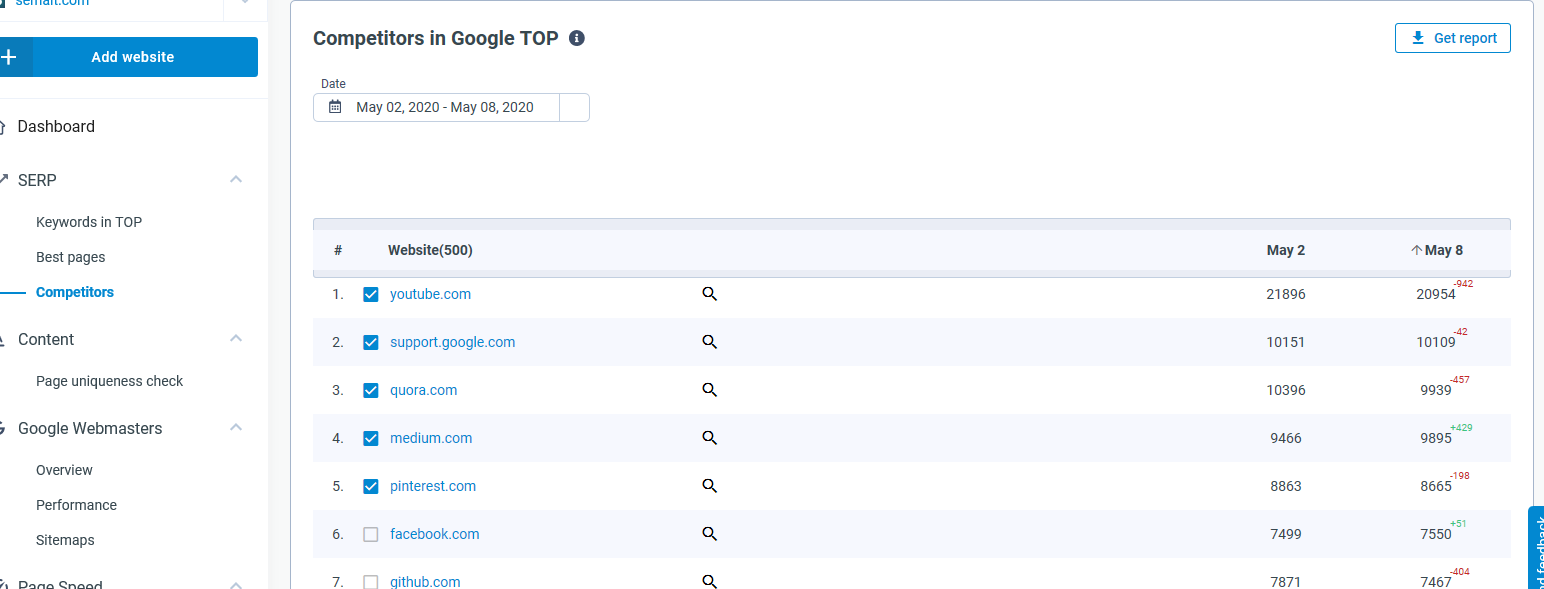
CONTENT
Under the content section, you will see the 'Page Uniqueness Check' tool which after clicking will take you to its own page. This is where you will find out if Google deems your webpage unique or not. You should note that even if you're double sure of the uniqueness of your webpage content, it is possible that it may have been copied by another person. And if that person indexes their content before yours, Google will recognize theirs as the primary source while your content will be tagged plagiarized. You do not want to hit by a Google penalty because Google penalizes you if you have a large amount of plagiarized content on your website.
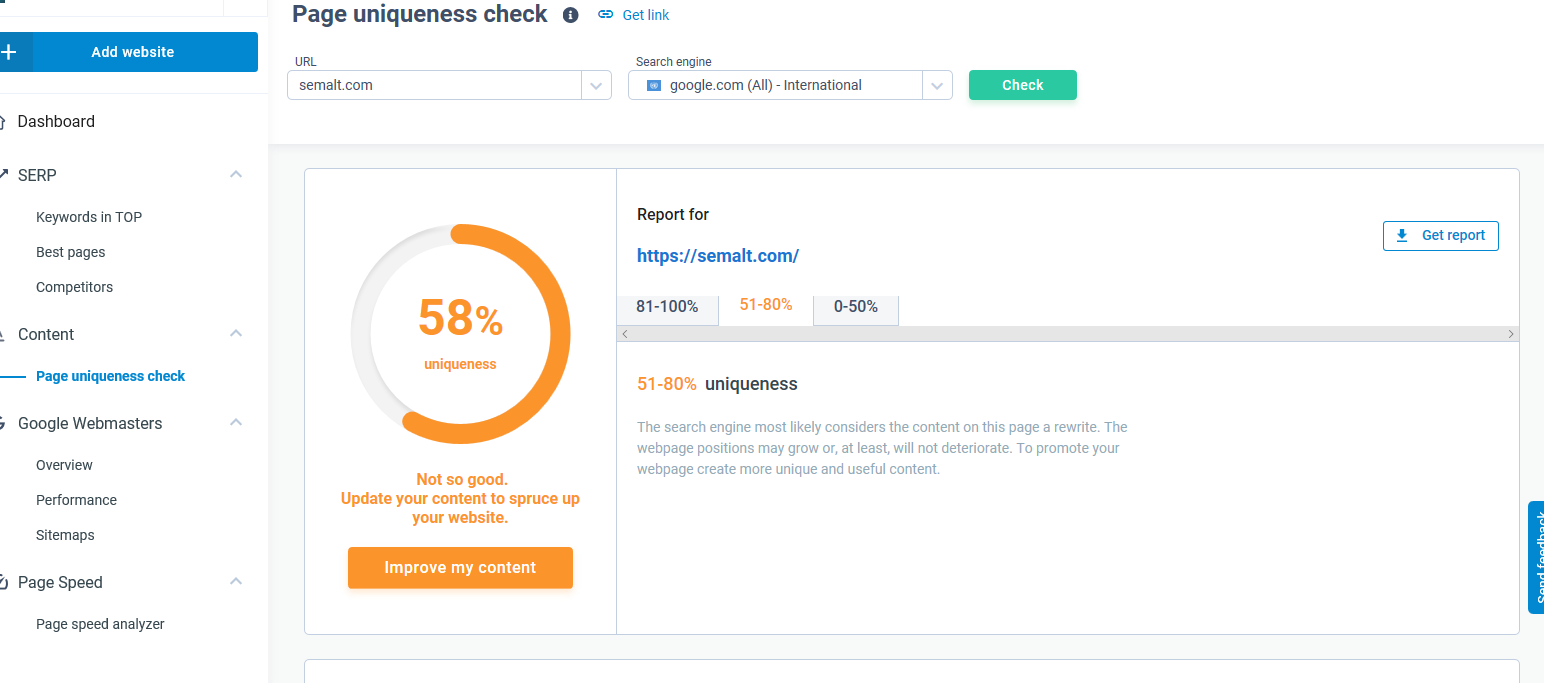
Semalt gives you a uniqueness percentage score to let you know how your website content is doing in the eyes of Google. A 0-50% score tells you that Google considers your content plagiarized and there's no chance of position growth for such a webpage. Semalt can help you replace your current content with a unique one to give you a better score.
At 51-80%, Google deems your content as a rewrite at best. Your webpage has a slim chance at webpage position growth. But why settle for average when Semalt can give you the best?
At 81-100%, Google deems your page as unique and your webpage position will most likely grow unhindered on the Google SERP.
You will find a list of all the text content that Googlebot sees on the particular webpage in question (Semalt will also help you highlight the duplicate parts of the webpage content).
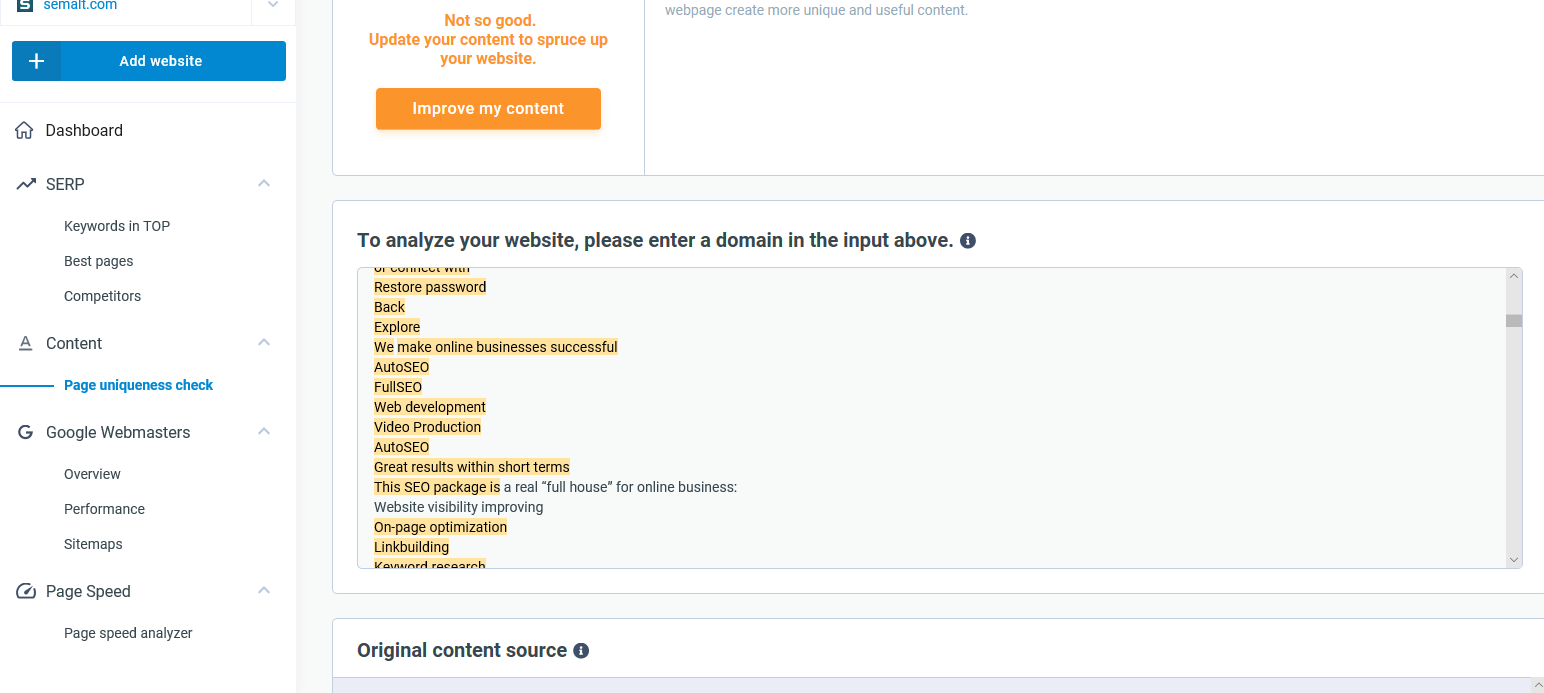
Also, you will find a table called 'Original Content Source'. This is a list of websites that Google considers primary sources of your webpage content. Here you can know exactly what part of your page content is found on each of those websites.

GOOGLE WEBMASTERS
This is a service that shows you how your website is displayed in Google organic search results while identifying indexing issues for you. Under this, you will find overview, performance and sitemaps.
a. Overview: In the overview section, you can submit and verify your website. You can also add your URLs to the Google index.
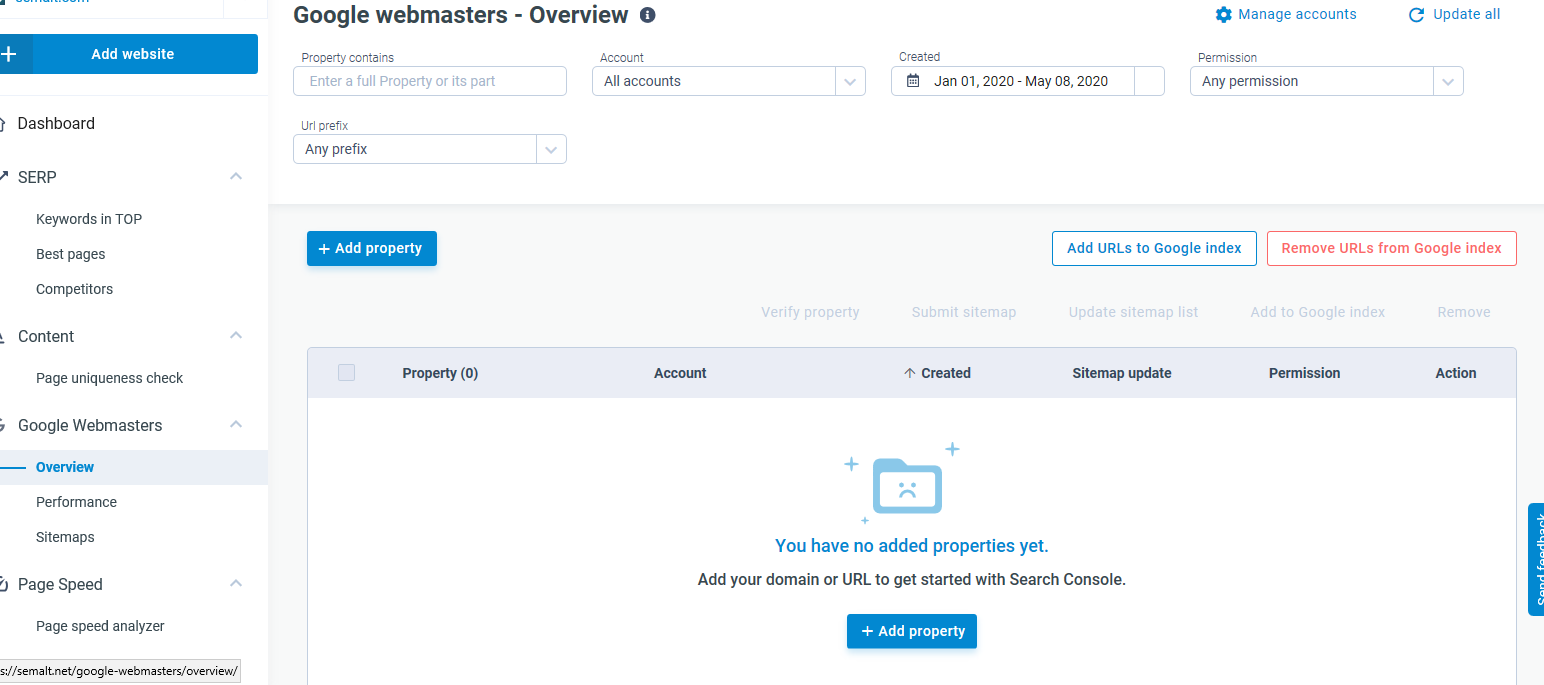 b. Performance: The data obtained here will tell you how effective your website is. You can compare the data for specific date/time periods. This will help you discover the strengths of your website and also every error affecting your ranking on TOP.
b. Performance: The data obtained here will tell you how effective your website is. You can compare the data for specific date/time periods. This will help you discover the strengths of your website and also every error affecting your ranking on TOP.c. Sitemaps: This is where you can submit the sitemap of your website to Google to see which sitemaps have been indexed and which ones contain errors.
Under the 'Submitted Sitemaps' table, you can see the number of sitemaps you have submitted to Google search console. From here you can check their status as well as the number of URLs they contain.
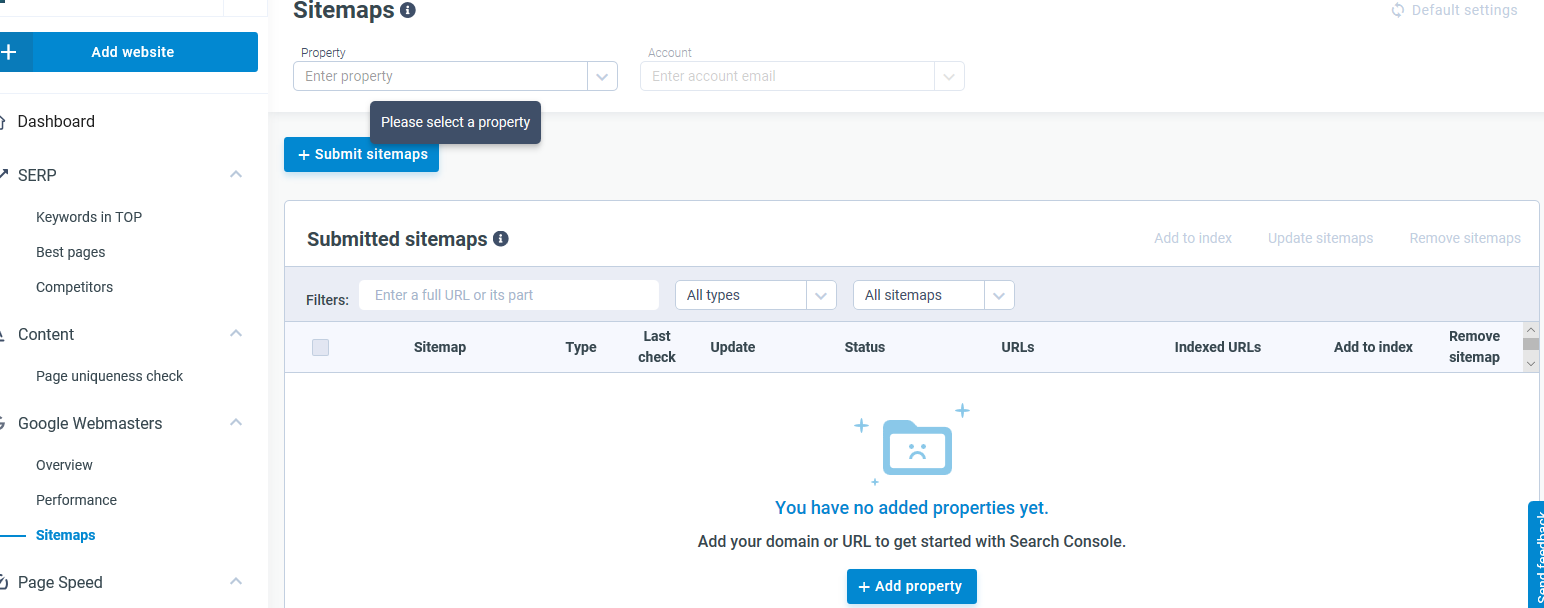
PAGE SPEED
The ‘Page Speed Analyzer’ tool is used to determine whether your page load time meets Google standards. It will also identify errors that need fixing and gives you accurate improvement suggestions you can apply to improve the load time of your webpage. It will emulate the average load times for both desktop and mobile browsers.
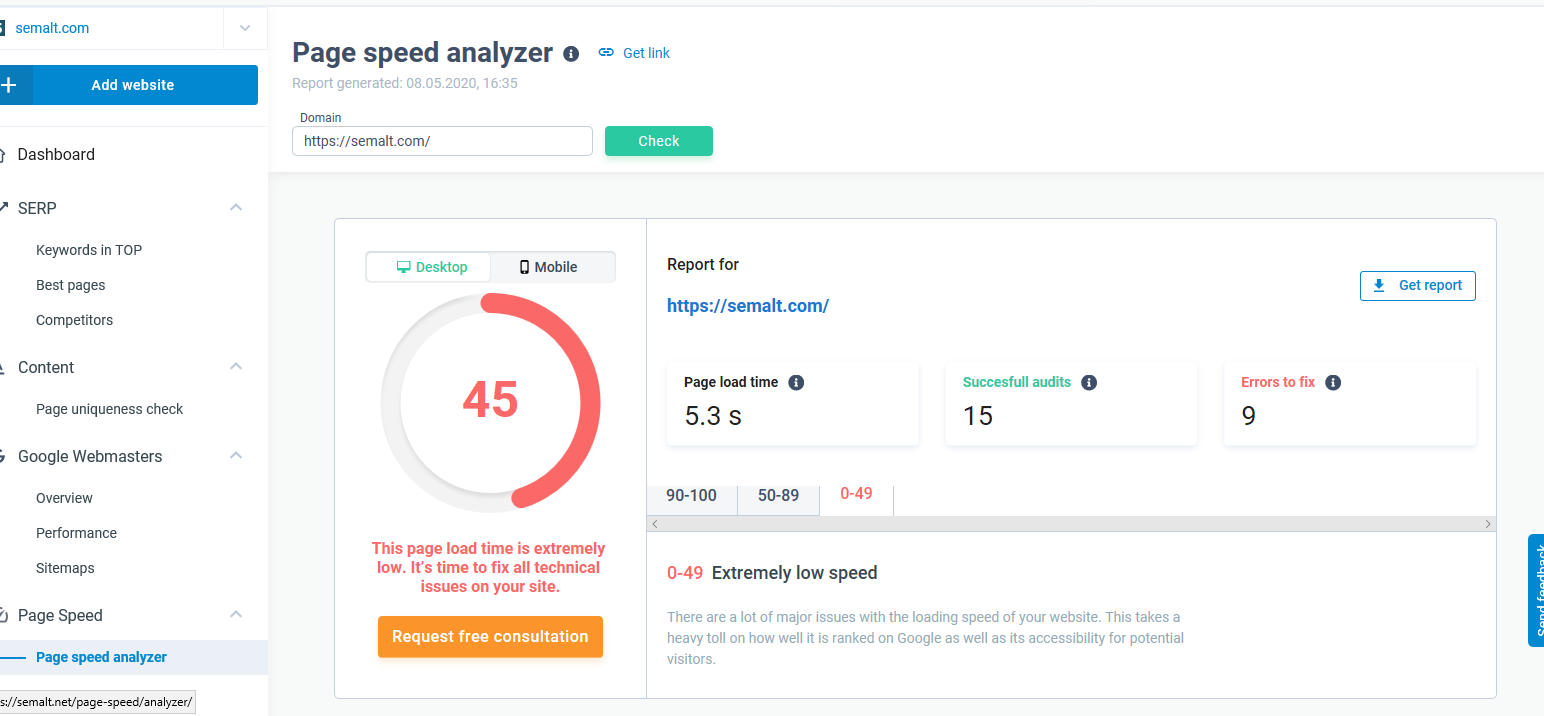
CONCLUSION
One can't overemphasize the importance of analyzing your SEO performance and from this article, you can see how this is done the best way - the Semalt way.